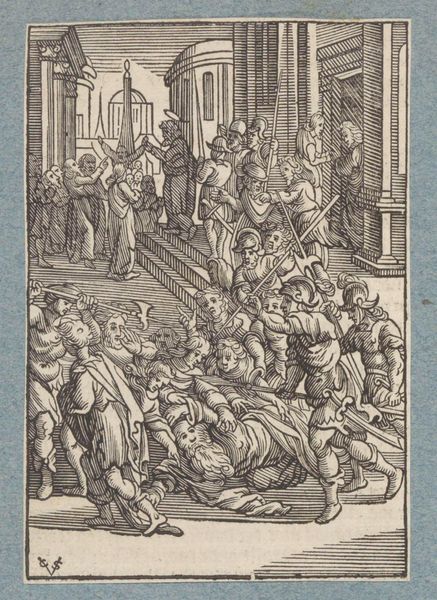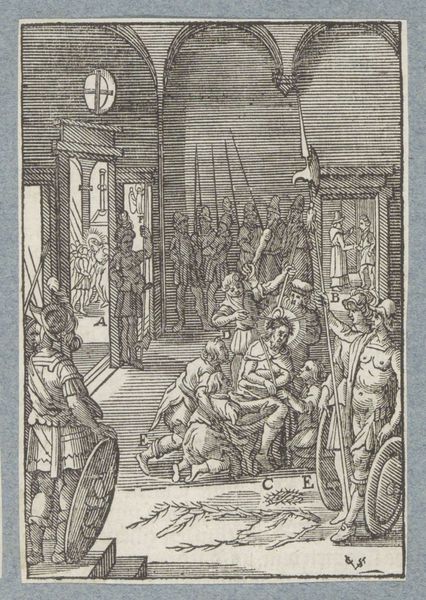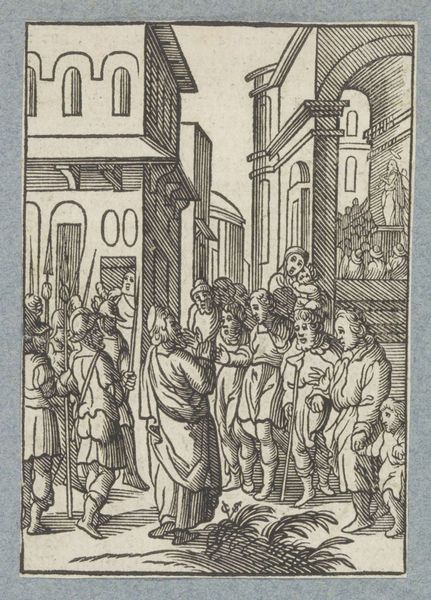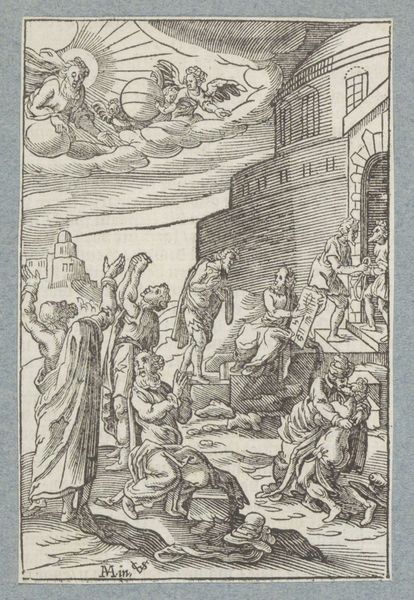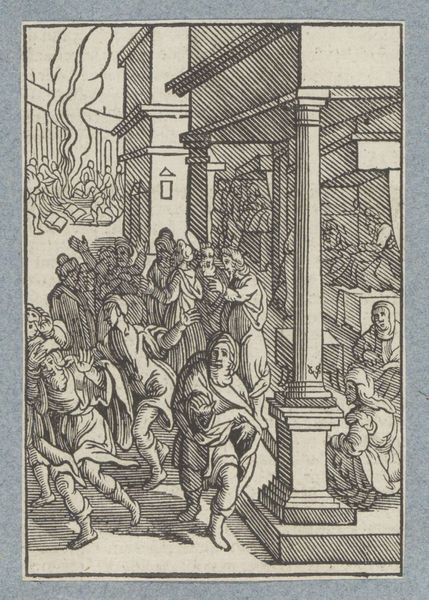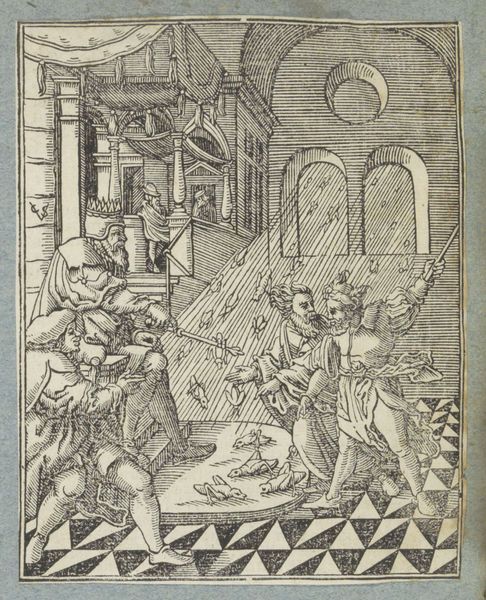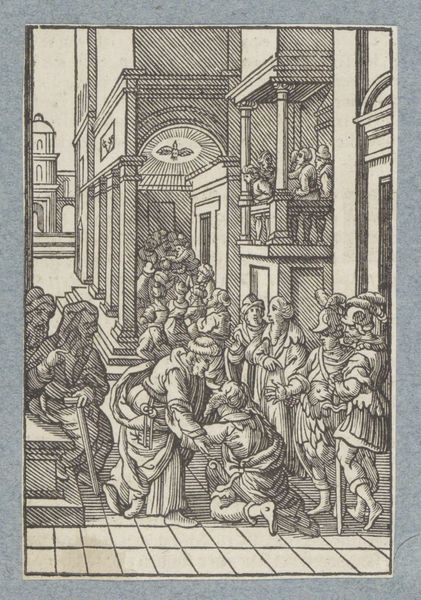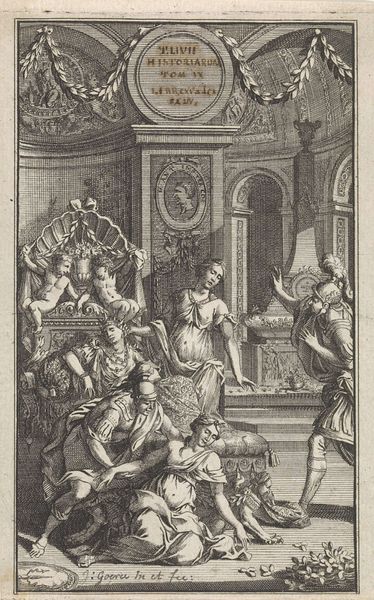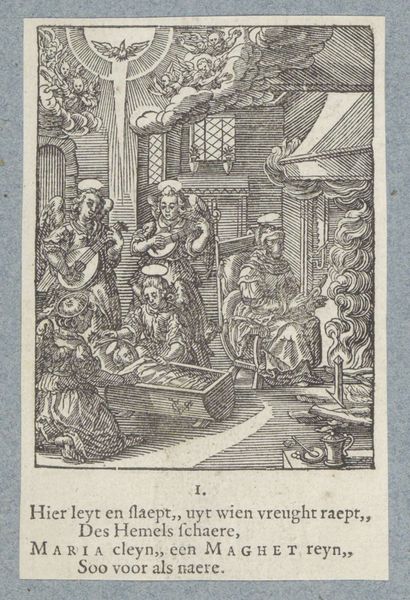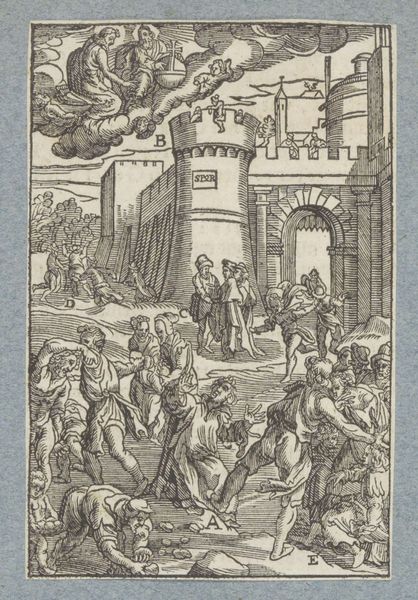
print, engraving
#
narrative-art
#
baroque
# print
#
figuration
#
history-painting
#
engraving
Dimensions: height 110 mm, width 81 mm
Copyright: Rijks Museum: Open Domain
Curator: Here at the Rijksmuseum, we have before us, "Joseph's Brothers Kneeling Before Him in Egypt," created by Christoffel van Sichem II, sometime between 1645 and 1646. It's an engraving, a print, really packed with figures. Editor: It's... dense. The composition feels incredibly compressed, doesn't it? All those figures pushing forward, the rigid architecture behind. The emotion seems almost… suffocating. Curator: Baroque printmaking often served didactic purposes. These images, disseminated widely, reinforced biblical narratives within the socio-political framework of the time. Van Sichem’s rendering brings Joseph’s story to a broader audience. Editor: The stark contrasts emphasize the drama—almost theatrical. See how the kneeling figures in the foreground are brightly lit while the city behind appears as an ominous backdrop. And those receding columns; such rigid verticals establishing the scene. Curator: It invites reflection on power dynamics, familial reconciliation, and, arguably, colonial administration—given that Joseph holds a position of power in a foreign land. The checkerboard floor becomes significant in this discussion, highlighting concepts of order. Editor: Right, the composition echoes other formal artistic elements of its period like paintings on biblical stories, such as similar use of chiaroscuro, a technique which exaggerates the dramatic effects. Even though there are other individuals around Joseph, he still is rendered with his own illuminated space which emphasizes his superiority. Curator: Consider also that the Baroque period favored this kind of intense emotionalism to move the faithful. This print, by disseminating the image so widely, contributed to that end, reminding the everyday believer of God’s promise and mercy through this domestic retelling of the events. Editor: Overall, it's clear the artist wants to tell you something, right here, right now. There is such narrative clarity in all the linear detailing of people’s emotions! Curator: Precisely. It reveals much about how religious and moral narratives were visualized and disseminated in the 17th century, through what, to our eyes, looks incredibly modern! Editor: Ultimately it displays the effectiveness of design to support the storytelling behind visuality.
Comments
No comments
Be the first to comment and join the conversation on the ultimate creative platform.
